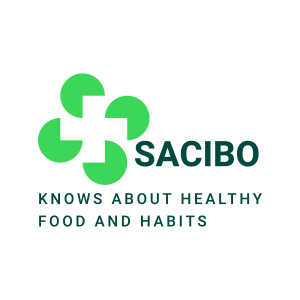- Home
- /
- Healthy Meal
- /
- Recipes of Healthy Food
- /
- Soups
- /
- Rassolnik Recipe - Soup...
- /
- Bowl of Comfort: Rassolnik...
In the world of soups, there are creations that transcend culinary boundaries, emerging as comforting classics in kitchens around the globe. The Soup from Salt Cucumber, also detected as Rassolnik, a lesser-known gem among the pantheon of soups, has a remarkable history and unique appeal. This article takes you on a journey through the intriguing world of this soup, from its historical origins to its variations worldwide and the nourishing benefits it offers. By the end of this epic exploration, you’ll not only savor the richness of Cucumber Soup but also learn how to create your own version, brimming with wholesome ingredients.
Among the soups, where recipes span continents and simmer with tradition, there exists a timeless concoction that weaves history, culture, and a deep love for hearty comfort food into a single steaming bowl. Rassolnik, a name that may not roll off the tongue as readily as more famous soups, is a culinary treasure waiting to be unearthed. This article is an invitation to embark on a flavorful journey, an exploration of Rassolnik’s enigmatic past, the regional variations that have given it depth, and the nutritional value that makes it more than just a delicious dish. Let’s delve into the essence of Rassolnik, a soup that encapsulates the rich tapestry of Eastern European cuisine and beckons the curious to savor its secrets, one spoonful at a time.
1. What is Rassolnik: A Culinary Journey Through the Secrets of Boiled Salt Cucumber Soup
1.1. Origin of word Rassolnik
Rassolnik, pronounced [rah-suh-LEEN-ik], might not be a household name in every corner of the world, but it carries a legacy that resonates with many. Its name originates from “rassol,” the brine from fermented cucumbers, which plays a central role in shaping the character of this soup. It’s a dish that whispers tales of grandmothers’ kitchens, Eastern European markets, and the cozy embrace of a hearty meal. So, let’s begin our culinary exploration to uncover the essence of Rassolnik, from its history to its unique variations and the wholesome goodness it offers.
The name, “Rassolnik,” is a harmonious blend of history and flavor. It finds its roots in “rassol,” the brine from pickled cucumbers, and “nik,” which signifies belonging or connection. This connection is not merely linguistic; it’s a culinary bond that unites generations of cooks and food enthusiasts, transcending borders and taste preferences.
1.2. Bond of traditions
For many, Rassolnik is more than a soup; it’s a comforting embrace, a nostalgic journey to the past, and a testament to the enduring allure of simple ingredients, harmoniously combined. As we delve into the mysteries and delights of Rassolnik, you’ll discover the rich stories and vibrant flavors that have made this soup a beloved part of Eastern European heritage. It’s an ode to tradition, a testament to innovation, and an exploration of how something as humble as a cucumber can become a symbol of warmth and sustenance.
1.3. Rassolnik, more than a soup
For many, Rassolnik is more than a soup; it’s a comforting embrace, a nostalgic journey to the past, and a testament to the enduring allure of simple ingredients, harmoniously combined. As we delve into the mysteries and delights of Rassolnik, you’ll discover the rich stories and vibrant flavors that have made this soup a beloved part of Eastern European heritage. It’s an ode to tradition, a testament to innovation, and an exploration of how something as humble as a cucumber can become a symbol of warmth and sustenance.
2. Recipe: Rassolnik or Homemade Soup from Salt Cucumber
Now, it’s time to embark on your culinary adventure and create your own homemade Soup from Salt Cucumber. This recipe combines elements from various global variations to offer a wholesome and hearty experience.
2.1. Ingredients
- 2 -3 medium salt cucumbers, peeled and sliced
- 1 large onion, finely chopped
- 1 medium carrot, finely chopped
- 2 medium potatoes, peeled and diced
- 2 tablespoon pearl barley
- 4 cups of bone broth
- 2 teaspoon of salt (adjust to taste)
- A pinch of black pepper
- A drizzle of olive oil
- Bay leaf
- 2 tablespoon of tomato paste
2.2. Instructions
a. In a large pot, heat a drizzle of olive oil over medium heat. Add the chopped onion and carrot and sauté until they become soft and slightly translucent, usually around 5-7 minutes.
b. Add the pearl barley to the pot and stir for an additional 2-3 minutes, allowing the barley to absorb the flavors of the onion and carrot.
c. Pour the bone broth into the pot, stir well to combine, and boil about 20-30 minutes up to half tender of barley
d. Gently stir in the sliced cucumbers, and continue to boil for an additional 10 minutes to allow the cucumbers to soft
e. Add the diced potatoes to the pot and let the soup simmer for about 15-20 minutes, or until the potatoes are tender.
f. Once the cucumbers are tender, remove the pot from heat.
g. Serve your homemade Boiled Salt Cucumber Soup hot in bowls and garnish with fresh herbs and a sour cream
3. The Historical Tapestry of Boiled Salt Cucumber Soup
The history of Soup from Salt Cucumber is a vivid tapestry woven from the threads of diverse cultures and time periods. This humble yet satisfying dish has humble origins that date back centuries, a testament to the creativity of resourceful cooks.
3.1. The Origins: A Necessity and a Delight
The roots of Cucumber Soup can be traced to regions where cucumbers were plentiful during the summer months. To preserve this abundance and create nourishing fare for the cooler seasons, ancient cooks devised a method to transform the cucumber into a soup. By adding salt, the excess moisture from the cucumbers was drawn out, creating the foundation for this unique dish.
3.2. European Adoption: The Comforting Warmth
Europe embraced Boiled Salt Cucumber Soup as a comforting delicacy, especially in regions with harsh winters. European adaptations of the soup featured cucumbers combined with ingredients like potatoes, carrots, and onions, providing warmth and sustenance during the colder months. The art of boiling cucumbers brought forth a new dimension to this dish, showcasing the versatility of this humble vegetable.
4. Variations of Boiled Salt Cucumber Soup
Boiled Salt Cucumber Soup, with its adaptability, has given rise to an array of regional variations. These versions showcase the diversity of interpretations of this comforting dish around the world.
4.1. Hungarian Tökfőzelék
Hungarian Tökfőzelék is a beloved variation of Boiled Salt Cucumber Soup. It features cucumbers cooked with dill and sour cream, resulting in a creamy and tangy delight. This version highlights the influence of Central European flavors and the transformation of cucumbers into a velvety texture.
4.2. Polish Ogórkowa
In Poland, Ogórkowa is a classic Cucumber Soup featuring cucumbers, potatoes, and the savory addition of smoked sausage. This version showcases the art of blending hearty ingredients into a robust soup, offering a truly satisfying experience.
4.3. Russian Rassolnik
Russian Rassolnik is a variant that combines cucumbers with pearl barley and often includes the surprise element of beef or chicken. The combination of cucumbers, pearl barley, and the richness of meat transforms this soup into a substantial and nourishing meal.
5. Nutritional Benefits of a Classic Dish
Boiled Salt Cucumber Soup isn’t just a delightful culinary experience; it also provides numerous nutritional benefits. The key ingredient, cucumbers, offers an array of vitamins, minerals, and antioxidants. In addition, the soup’s use of bone broth provides essential nutrients and collagen. The combination of these elements results in a soup that supports overall well-being.
Pickles offer more than just tantalizing flavors; they also come with several nutritional benefits.
5.1. Probiotic Powerhouses
Fermented pickles are teeming with beneficial probiotic bacteria. These friendly microbes support gut health and digestion.
More about digestion read in the article: His Majesty Microbiom: Why Variety in Eating is Great
5.2. Hydration and Electrolytes
Cucumbers are predominantly water, making them a hydrating powerhouse. They help keep your body cool and refreshed, making this soup a perfect choice for hot weather. The high water content aids in digestion and keeps you feeling full and satisfied. Additionally, cucumbers are rich in vitamins and minerals like vitamin K, potassium, and magnesium, which are essential for overall health.
Comprehensive guide about water you can find here: Water and the Human Body: The Vital Connection
5.3. Bone Broth: A Nutrient-Rich Elixir
The use of bone broth in this soup adds an extra layer of nutrition. Bone broth is known for its collagen content, which is beneficial for skin, joint, and gut health. It’s also a source of essential amino acids, making it a valuable addition to your diet. The slow simmering process extracts minerals like calcium and magnesium from the bones, making them readily available for your body to absorb.
All-round information about collagen read here: Multifaceted Collagen: Types, Functions, and Benefit?
5.4. Pearl Barley: A Fiber-Rich Grain
Pearl barley, a common ingredient in this soup, is an excellent source of dietary fiber. It promotes digestive health, helps regulate blood sugar levels, and contributes to a feeling of fullness, making it an ally in managing weight. Moreover, pearl barley provides vitamins and minerals, including B-vitamins, iron, and magnesium, to support overall well-being.
About magnesium get known in the article: Magnesium: The Essential Mineral for Optimal Health
5.5. The Power of Seasonings
The seasonings in Cucumber Soup, such as salt and black pepper, not only enhance the flavor but also provide essential minerals like sodium and potassium. These minerals are crucial for maintaining the balance of bodily fluids, nerve function, and muscle contractions. While too much salt should be consumed in moderation, when used mindfully, it contributes to a well-rounded diet.
5.6. Adaptation for Dietary Needs
One of the beautiful aspects of this soup is its adaptability to various dietary preferences and needs. It can be easily customized for vegetarian or vegan diets by using vegetable broth and omitting animal-derived ingredients. This adaptability allows individuals to enjoy its nutritional benefits regardless of their dietary choices.
5.7. Satiety and Weight Management
Cucumber Soup, with its combination of fiber-rich barley and hydrating cucumbers, provides a sense of fullness that can help with weight management. It’s a nourishing yet low-calorie option, which can be a valuable addition to a balanced diet, promoting a feeling of satiety while providing essential nutrients.
5.8. A Soothing Dish for Digestion
The gentle warmth of Boiled Salt Cucumber Soup, combined with ingredients like potatoes, is known for its digestive comfort. It can be an excellent choice for those seeking relief from minor digestive discomfort. Additionally, the inclusion of bone broth can help support gut health by promoting the growth of beneficial bacteria.
As you savor a bowl of Cucumber Soup, you’re not only treating your taste buds but also nourishing your body with a variety of essential nutrients. It’s a reminder that traditional dishes can offer a wealth of health benefits while being a delightful part of your culinary journey.
Conclusion
In the world of gastronomy, where trends come and go, the enduring legacy of Rassolnik stands as a testament to the power of tradition and simplicity. This unassuming soup, born from the necessity of preserving cucumbers, has transformed into a culinary gem that warms hearts and bellies across Eastern Europe and beyond. The journey through Rassolnik has revealed the art of balancing humble ingredients with rich flavors, and the ability of this dish to adapt to different regions and palates.
As we conclude our exploration, it’s evident that Rassolnik is more than just a soup; it’s a culinary time machine that allows us to savor the past and connect with our heritage. With each spoonful, we’re reminded that the most cherished recipes often have humble beginnings, that the most enduring flavors are those steeped in history.
So, the next time you savor a steaming bowl of Rassolnik, let it be a reminder that food is more than sustenance; it’s a bridge to our roots, a celebration of our cultural diversity, and a reminder that the simplest of dishes can hold the most profound of meanings. In the world of culinary delights, Rassolnik remains an unsung hero, inviting all who venture to taste its wonders to embrace the flavors of history and tradition.
































































0 Comments